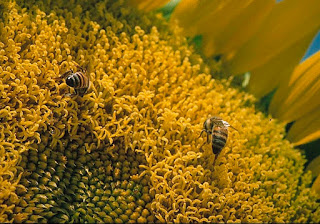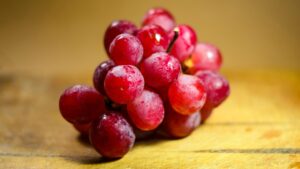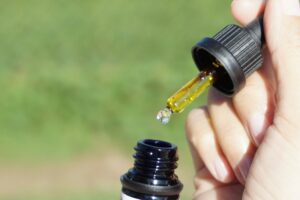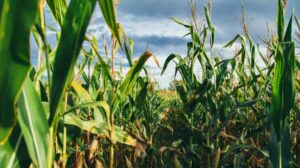Introduction
Chemical crop protection is a worldwide industry with the primary aim to protect and secure safe food production. It is all inclusively referred to as the plant science industry. Products in this industry are commonly referred to as pesticides or agrochemical products, which play a vital role in controlling the pests and diseases that threaten our food supply. The global market for agrochemicals is estimated in the order of USD 215.7 billion (Straits Research, 2024). This page (crop protection) is mostly about chemical crop protection.
Biological control uses a pest or disease’s own natural enemies to control the pest or disease. Agents such as friendly fungi, bacteria, viruses, nematodes or parasitic insects are used to control pests and diseases in both high value, intensive crops and in field crops. This is a rapidly growing area of crop protection and several agents are produced locally in South Africa. Find the “Biocontrol” page.
One of the selling points of Conservation Agriculture is weed control. It sees good crop canopy, soil cover and minimal disturbance as contributing 97% of what it takes to control weeds. Find the “Conservation Agriculture” page.
International business environment
- Visit the website of CropLife International for international news and perspectives: www.croplife.org.
- CropLife EUROPE – https://croplifeeurope.eu
- Collaborative International Pesticides Analytical Council (CIPAC) – www.cipac.org
- Insecticide Resistance Action Committee – www.irac-online.org
- International Association for the Plant Protection Sciences – www.plantprotection.org
Local business environment
Although the South African chemical crop protection market by far the largest is in Africa, it only comprises less than 2 percent of the world market.
The breakdown of chemical crop protection is estimated as follows:
| SEGMENT | % OF MARKET |
| Herbicides | 39 |
| Insecticides | 27 |
| Fungicides | 22 |
| Other | 12 |
Companies importing, manufacturing and distributing agrochemicals are members of CropLife South Africa and support the aims of sustainable agriculture: to “produce sufficient food and fibre economically and in an environmentally and socially sensitive manner, maintaining the natural resource base for future generations”. The industry “is committed to Integrated Pest Management as an economically viable, environmentally sound and socially acceptable approach to crop protection”.
Further reference:
- Find the monthly Chemical and fertilizer report on the Grain SA website, www.grainsa.co.za.
- The Bureau for Food & Agricultural Policy (BFAP) Agricultural Outlooks looks at the effect of steep input costs on farmer profitability.
Pollinators
Initiated by the international crop protection industry, a programme called Operation Pollinator is helping farmers in Europe, North America and Asia Pacific boost the number of pollinators on their farms by creating habitats tailored to native insects. Refer to www.operationpollinator.com.
There is also a Pollinator Partnership. See www.pollinator.org.
The South African Pollinator Forum was established in 2014 to steer local efforts to protect pollinators. It consists of the office of the registrar of pesticides, representatives from the South African Bee Industry Organisation (SABIO), the crop protection industry, Agricultural Research Council (ARC) and others.
Top 10 ways farmers can protect pollinators
- Look at labels. Follow crop protection product instructions, including using the recommended dose, preventing drift of sprays and dusts (e.g. in cocoa plants), not applying in windy conditions or when there is a danger of drift to non-target areas.
- Get real. Only use genuine crop protection products. Counterfeit and illegal products have unknown impacts and could potentially harm humans, animals and the environment.
- Spare the spray. Apply crop protection products within an Integrated Pest Management program, only using them when necessary. For sprays, consider spot-spraying (just applying to infested areas). In places where there are Spray Service Providers, consider using their services.
- Bust dust. Minimise distribution of dust from treated seed by carefully pouring it out of bags, avoiding seed spillage (cleaning it up otherwise), disposing of seed bags and unused seed properly, and regularly cleaning seed equipment.
- Use a clean machine. In cases where planting machines are utilized, choose those that eliminate or minimise dust production and ensure they are regularly cleaned.
- Mind the time. Avoid spraying when bees are foraging and plants are flowering.
- Protect liquid assets. Avoid contamination from spray liquids by being cautious when mixing and loading, properly disposing waste and other used materials, and cleaning up any spills appropriately.
- Empower with flowers. Protect pollinator habitats by supplying a constant source of nectar and pollen and creating healthy, diverse gardens that beautify the environment and serve as a food source.
- Communicate at the farm gate. Communicate and educate farmers on when and how to use crop protection products. Farmers should inform local beekeepers when they are going to apply crop protection products so nearby hives can be moved or otherwise protected.
- “Bee” responsible. Beekeepers also need to follow good management practices with good hygiene, disease control, proper feeding, access to water, genetic diversity and moving hives out of areas to be sprayed.
Source: “Pollinator Protection Vital to Crop Production”, a pamphlet by CropLife Africa Middle East

| Photo used courtesy of the Department of Agriculture, Land Reform and Rural Development (DALRRD) |
Refer to the blog “Eucalypts and other honey bee forage plants – what you can do to help our honey bees”.
For the newcomer
Records
Record keeping at farm level is important to ensure traceability. It is advisable for the producer to draw up a table for accurate record keeping at farm level. Suggested entries include:
- Information about the crop including cultivar, hectares and date of agrochemical application.
- Information on herbicide sprays or control remedies for a pest/ disease including provider’s AVCASA (Association of Veterinary and Crop Associations of South Africa) number, concentration applied and reason for the agrochemical application.
Labels
- It is important to note the directions on the label regarding the registration of agricultural chemicals for the control of a particular weed, fungus or pest.
- Except for the lot number, it is also advisable to preserve the date of manufacture of the containers.
- Pay special attention to poison that remains from a previous crops.
- The influence of type of nozzles, time of application, spray delivery, use restrictions, compatibility with other products and general safety precautions must be taken into account.
Agrochemicals must also have an L-number, which means the product has been registered for use in South Africa. The producer must also insist on a “Safety data sheet” (SDS) or “Material Safety Data Sheet” (MSDS) from the supplier. The MSDS provides extensive information about the product, even the kind of first aid or emergency relief procedures that can be applied. The MSDS is provided free of charge with the purchase of agricultural chemicals.
Recommendations by agents
Always insist that all recommendations regarding agrochemical applications are made in writing. Make sure the agent or representative who makes the recommendations complies with the necessary requirements, such as prescribed by AVCASA.
If applications are handled by an agrochemical advisor, make sure this person’s name and P-number appear on the recommendation. The P-number is issued by the Department of Agriculture after the advisor has undergone the necessary training. The operator’s P-registration must also be in the relevant field of application, for example weed control, fumigation and aerial are all separate registration fields.
Source: http://agbizgrain.co.za/en/sa-grain-quality/maximum-residue-levels
National strategy and government contact
In South Africa all chemicals used for the control of any pest or disease on a plant must be registered for such use under Act 36 of 1947 (the Fertilisers, Farm Feeds, Agricultural Remedies and Stock Remedies Act). An amendment to this Act (No R.1716 of 26 July 1991) prohibits the acquisition, disposal, sale or use of an agricultural remedy for a purpose or in a manner other than that specified on the label on the container. Additional legislative and policy framework documents include Act 36 of 1983 (the Agricultural Pests Act) and the International Plant Protection Convention (IPPC).
Department of Agriculture
Find contact details for the following at www.nda.gov.za:
- The Registrar: Fertilizer, Farm Feeds, Agricultural Remedies and Stock Remedies, 1947 (Act no. 36 of 1947)
- Directorate Agriculture Inputs Control
- Directorate Plant Health In co-operation with Provincial governments they administer laws relating to plant health, including the aspect of the control and eradication of pests and diseases. They run control programmes and issue regulations to protect and improve plant health.
- Directorate: Land Use and Soil Management Redbilled Quelea (Quelea quelea sp.), a bird species, is an agriculturally important migratory pest to small grain crop-producing farmers of southern Africa. The policy for managing the Redbilled Quelea problem was established in 1994 under Act 36 of 1983. The Directorate: Land Use and Soil Management enforces this Act.
- The Policy for managing locust problems in SA document can be found at www.nda.gov.za.
Further reference:
- See our blog “New regulations published for Agricultural Remedies in South Africa” (2023, October).
- Read the Croplife SA article about the requirements for aerial applications of pesticides at https://croplife.co.za/Article/NewsArticle?pv=the-dos-and-donts-of-aerial-application.
Role players
View the Premium Listings below (scroll down or click on “Premium Listings” on the Table of Contents to the right).
Further reference:
Training and research
- Agricultural Colleges do short courses on the handling of pesticides and herbicides. Find contacts on the “Agricultural education and training” page.
See also the “Biocontrol” page.
Websites and publications
Visit the websites listed earlier on this page.
- Several publications are available from CropLife SA including Responsible Pesticide Use: A Guide for Operators (available in 11 languages) and Guidelines to the RSA Classification Code and Labeling of Agricultural Chemicals and Stock Remedies.
- Registered chemicals in South Africa are published in guides such as A Guide for the Control of Plant Diseases, Pests and Diseases issued by the Department of Agriculture on a regular basis. Contact the Resource Centre at 012 319 7141. Several shorter documents (Info Paks) can be found at www.nda.gov.za. Examples of these include “Managing weeds, pests and diseases” and “Pesticides – storing agrochemicals and stock remedies”.
- CD Roms from the ARC-Plant Health and Protection include: (i) Crop Pests, vol. 1: Deciduous Fruit, Grapes and Berries (ii) Crop Pests, vol. 2: Citrus and Other Subtropicals (iii) Crop Pests, Vol. 3: Potatoes and Other Vegetables (also available as a book) (iv) Crop Pests, Vol. 4: Field Crops and Pastures (v) Crop Pests, vol. 5: Flowers and Other Vegetables (also available as a book) (vi) Medically Important Spiders and Scorpions of Southern Africa. Also available are several posters including: Herbicides and weeds: how to prevent or delay resistance/Onkruiddoders en onkruide: hoe om weerstand te vermy of te vertraag as well as several books and posters on spiders and scorpions. Write to booksales [at] arc.agric.za or infopri [at] arc.agric.za.
- Also available from ARC-Plant Health and Protection are The Kleynhans Manual. Collecting and Preserving Nematodes. PPR Handbook No. 16 and Plant Nematodes in South Africa.
- Available from ARC-Grain Crops in Potchefstroom is the revised Common Weeds in Southern Africa (Algemene Onkruide in Suidelike Afrika in Afrikaans). Call 018 299 6199 or visit www.arc.agric.za. The excellent Maize Information Guide (MIG) includes notes on crop protection. Download it from the same website.
- The ARC-Infruitec/Nietvoorbij has a series of pamphlets covering diseases and pests in deciduous fruit crops. To order these, call 021 809 3100.
- Call 012 842 4017 or email iaeinfo [at] arc.agric.za for the following publication, available from the ARC in Silverton: (i) Mechanisation basics: Sprayers and spraying techniques (Training manual) (ii) Small-scale chemical sprayer
- Find the African Arachnid Database (AFRAD) at www.arc.agric.za. An expert on-line database (AFRAD) was initiated by the ARC PHP, which provides vitally important information about arachnids– a major component of agro-diversity, both as a major pest of crops and as beneficial predators in Integrated Pest Management (IPM) programmes (countries south of the Sahara).
- Find the Information Core for Southern African Migrant pests (ICOSAMP) pages on www.arc.agric.za.
- Write to App4Agri at cropsolutions.za [at] gmail.com for the following electronic guides: (i) Guide for the Control of Problem Plants South Africa (2022) (ii) Guide for the Control of Weeds in South Africa (2021) (iii)Weeds Common in Crops and the Herbicides that Control Them (2021) (iv) Chemical Control of Plant Diseases (2019), and (v)Crop Pest Management (2018).
- Bacterial Diseases of Plants in South Africa by Teresa A Coutinho, Teresa Goszczynska, Cheryl Lennox and Stephanus Venter. ISBN 978-1-920146-023. This book provides information on bacterial diseases of agricultural crops, ornamentals and forest tree species. It is distributed by Briza Publications (www.briza.co.za/catalog).
- Find the Maximum Residue Limits and Recommended Withholding Period for Deciduous Fruit Intended for Processing Purposes list on www.canningfruit.co.za, website of the SA Canning Fruit Producers’ Association (CFPA).
SOME ARTICLES
- Masiwa D. 2024, November 28. “Transporting crop protection: Avoid risks and stay compliant”. Food for Mzansi. Available at www.foodformzansi.co.za/transporting-crop-protection-avoid-risks-and-stay-compliant
- Tembo P. 2024, October 22. “Effective crop protection strategies to take your farm forward”. Food for Mzansi. Available at www.foodformzansi.co.za/effective-crop-protection-strategies-to-take-your-farm-forward
- Ngumbi E. 2020, February 25. “How changes in weather patterns could lead to more insect invasions”. The Conversation. Available at https://theconversation.com/how-changes-in-weather-patterns-could-lead-to-more-insect-invasions-131917
- Kerr, B. 2017, March 8. “Spraying tips: Don’t mix chemicals”. Farmer’s Weekly. Available at www.farmersweekly.co.za/crops/vegetables/spraying-tips-dont-mix-chemicals/






